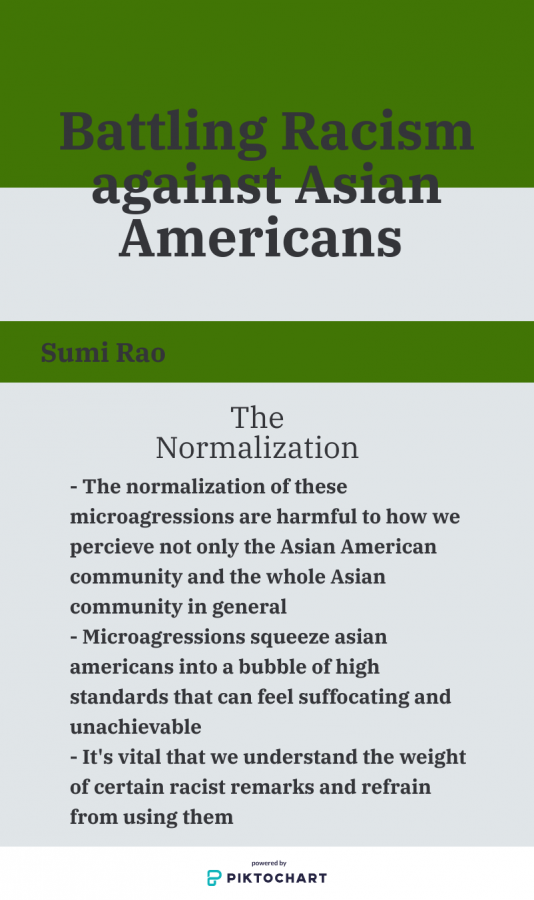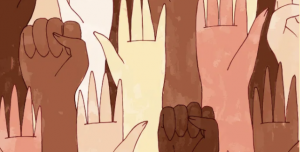Microaggressions against Asian American community normalized
For more information on understanding racism against Asian Americans, visit MedicalNewsToday.com
February 5, 2021
For generations, Asian Americans have been subject to microagressions, unintentional or subtle forms of discrimination against ethnic minority groups, as they are often viewed as the model minority among people of color in America. The normalization of such microaggressions have harmed the Asian American community’s image and as a result, society has failed to recognize these problems to the degree they should be evaluated.
“Asian American identity is diluted by the model minority myth in which we are made to believe that if we do not achieve academic success at every stage of our lives, we are letting down other racial groups,” junior Yukta Ramanan said. “Oftentimes, this model minority myth discounts our struggles and hurdles them as ‘less important’ and not worthy of being discussed.”
According to CBS News, the devastating effects of COVID-19 have created incentive for racist attacks on the Chinese American community, after deeming the virus, ‘the Chinese virus’. The South Asian American and Filipino American communities have also been harmed with higher mortality rates compared to other people of color (POC) and white Americans, causing many Asian American store owners to close businesses.
The lack of media coverage on racial attacks against the community could be due to the fact that Asian American microaggressions have a less visible effect on day-to-day life when compared to other minority groups which suffer from systemic racism and hate crimes on a larger scale. Regardless of the reason, this lack of coverage has contributed to the normalization of racism towards Asian Americans, to the point that the racism is hard to catch.
“This issue is not as discussed as other minority groups because the anger towards racism against Asian Americans is not nearly as widespread as the anger towards racism against other POC,” junior Lauren Siesky said. “When I was little, I didn’t even realize that some of the stereotypical comments and remarks about Asians were racist because no one really cared.”
According to the Cornell Chronicle, experiencing racial microaggressions can cause Asian Americans to feel alienated as “perpetual foreigners” in their own country. Some people experience teasing for not using Western utensils, which directly challenged the validity of their cultural values. These seemingly subtle acts of discrimination are detrimental to the mental health of the victims, which discounts the long-standing societal belief that the discrimination that Asian Americans face does not qualify as racism.
“I experienced racism at a young age coming to America with foreign parents who weren’t really fluent in the [English] language,” junior Reet Sangroula said. “People have also made many jokes about my religion. Being a Hindu, people used to say that believing in more than one god is a joke or that it isn’t real.”
The frequent racism towards Asian Americans builds to the point where society begins to disregard these microaggressions as harmful and thus adds to the pre-existing system of oppression.
“We need to dismantle the system of oppression and bias about our own cultures within ourselves. Often, Asians have a preconceived notion of how they are supposed to operate and act within society,” Ramanan said. “Letting go of this notion and not being afraid to embrace your identity is something that takes a lot of courage and resilience. Openly flaunt your culture and don’t be afraid to have uncomfortable conversations with people when they say something out of turn.”




